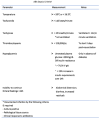Infection and Burn Injury
- PMID: 39604183
- PMCID: PMC11575387
- DOI: 10.3390/ebj3010014
Infection and Burn Injury
Abstract
Burn injury is debilitating and among one of the most frequently occurring traumas. Critical care improvements have allowed for increasingly positive outcomes. However, infection, whether it be localized to the site of the wound or systemic in nature, remains a serious cause of morbidity and mortality. Immune suppression predisposes the burn population to the development of invasive infections; and this along with the possibility of inhalation injury puts them at a significant risk for mortality. Emerging multi-drug-resistant pathogens, including Staphylococcus aureus, Enterococcus, Pseudomonas, Acinetobacter, Enterobacter, and yeast spp., continue to complicate clinical care measures, requiring innovative therapies and antimicrobial treatment. Close monitoring of antimicrobial regimens, strict decontamination procedures, early burn eschar removal, adequate wound closure, proper nutritional maintenance, and management of shock and resuscitation all play a significant role in mitigating infection. Novel antimicrobial therapies such as ultraviolet light, cold plasma and topical antiseptics must continue to evolve in order to lower the burden of infection in burn.
Keywords: CAUTIs; CLABSIs; HAI; MDRO; MRSA; burn; infection; sepsis; trauma.
Conflict of interest statement
The authors declare no conflict of interest.
Figures
References
Publication types
LinkOut - more resources
Full Text Sources
Miscellaneous

